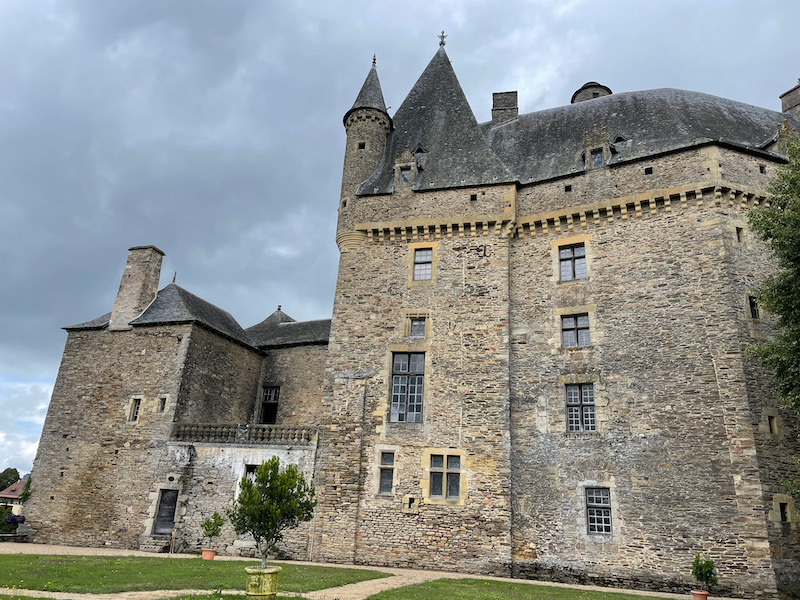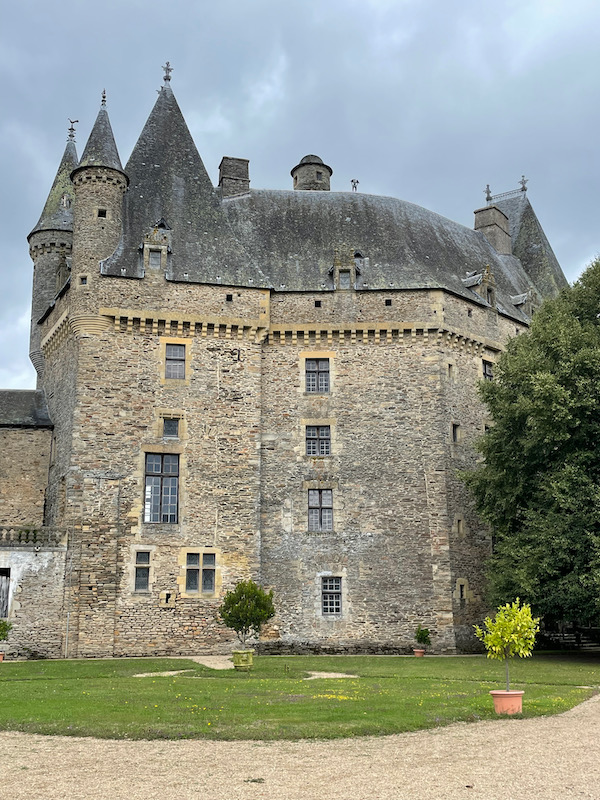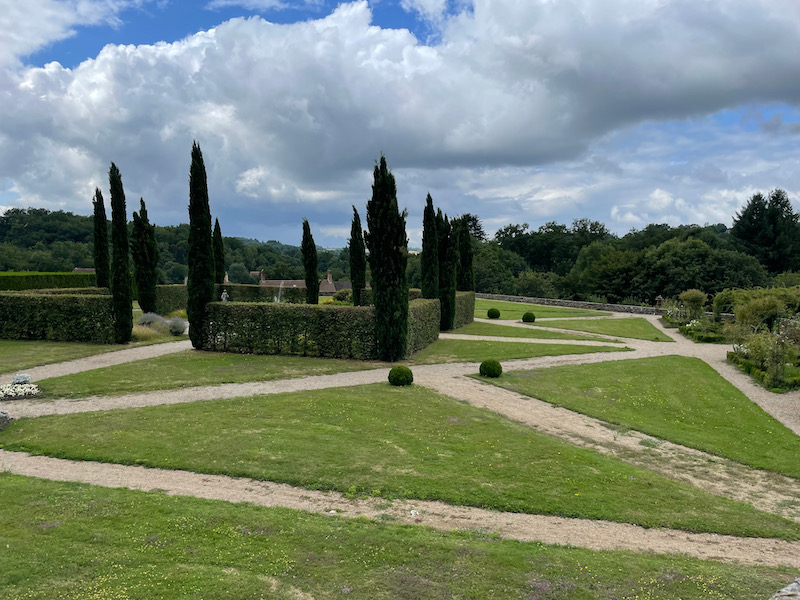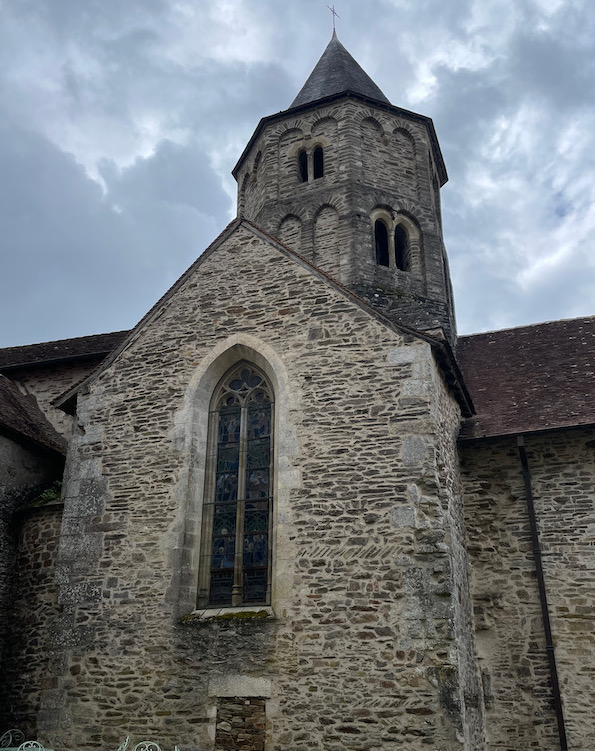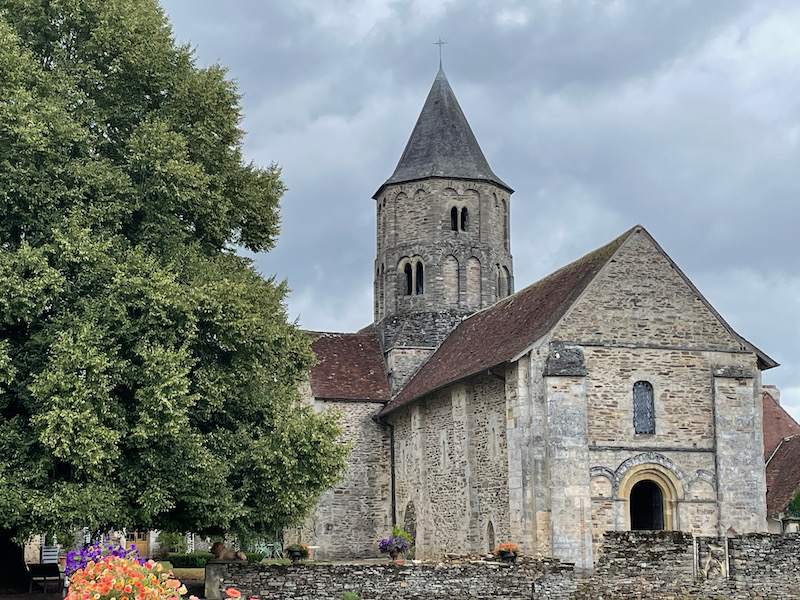Our Blog - Normandy 2023 - Château de Jumilhac, France
The Château de Jumilhac dates back to the 13th century. In 1579, Antoine Chapelle, a wealthy iron-master and landowner in the region, married the heiress of the existing castle. When King Henry IV gave him the title of Count of Jumilhac in 1597, he expanded the castle but then died shortly thereafter in 1603. In 1655, his grandson was upgraded to a Marquis and made additional changes to turn it into a palace, using Versailles as an example. After the French Revolution, it was sold several times until it was bought in 1927 by the family that currently owns it. It was this family who restored the castle and opened it to the public (in 1964).
Here you can see the entrance gate, the two wings, and then the main castle at the back. Then a view of the main castle once we were inside the entrance gate. If you look at the left side of the 2nd picture, you can make out (hopefully) that the last tall tower with a turret is actually a square tower at the base. This is the original part of the 12th century castle. Lucy was SO happy that she got to tour the whole castle that she rolled in the courtyard.
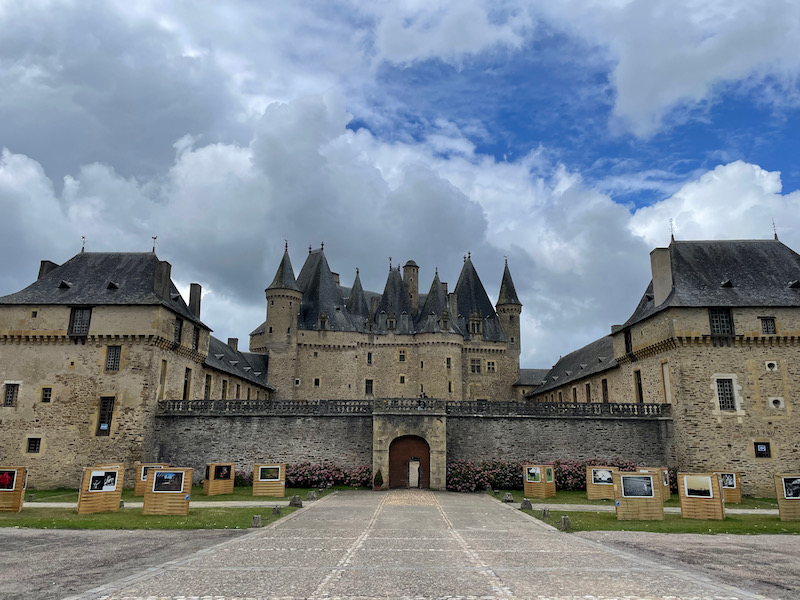
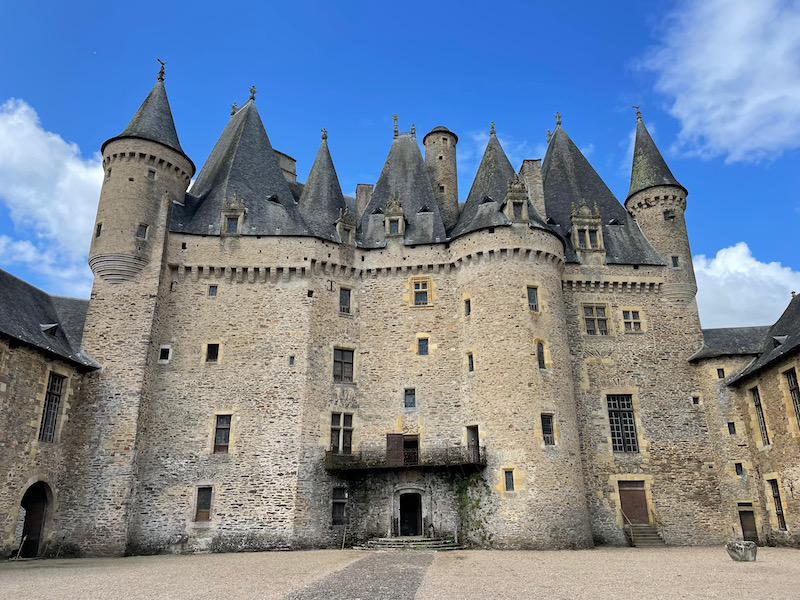
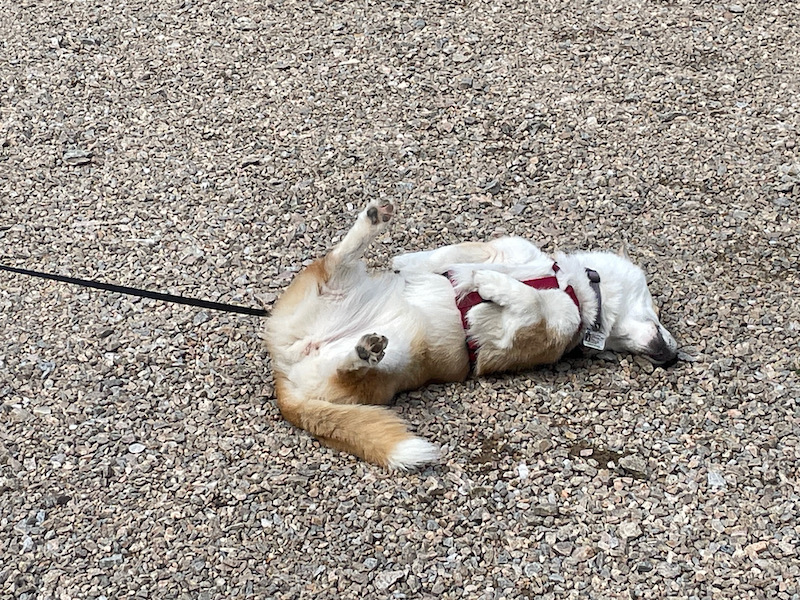
A few more exterior pictures of the wings before heading inside. You can see the mullion windows as well as the defensive crenelations around the top of the castle and the various turrets.
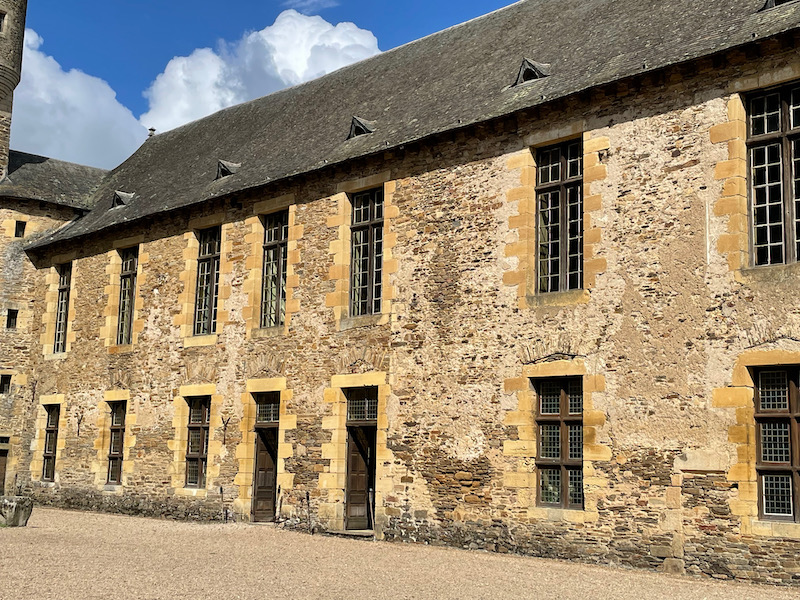
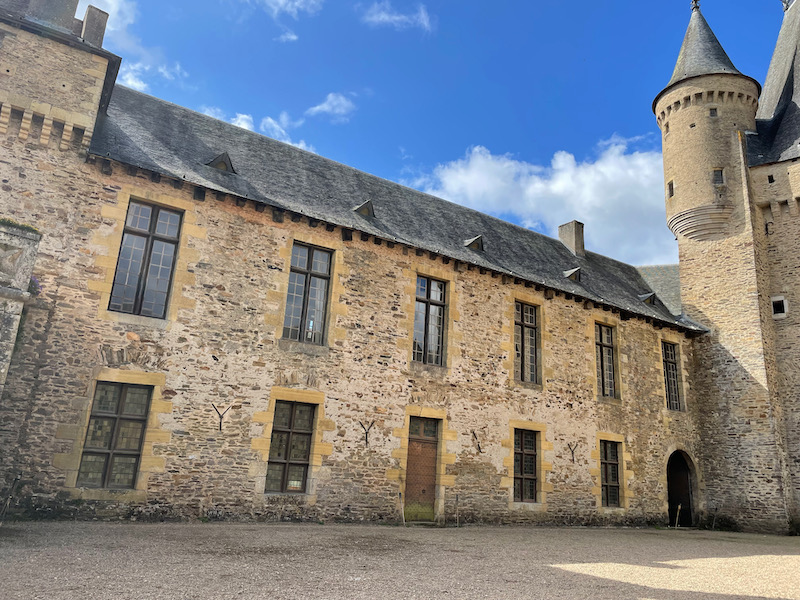
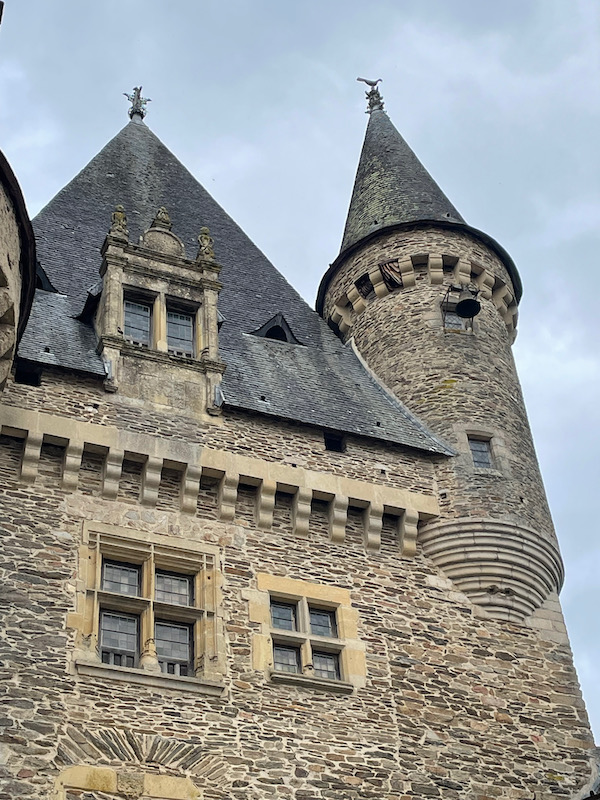
The first thing that we saw was a stone with the carved coat of arms of Antoine Chapelle (the chapel) and his wife (the lion).
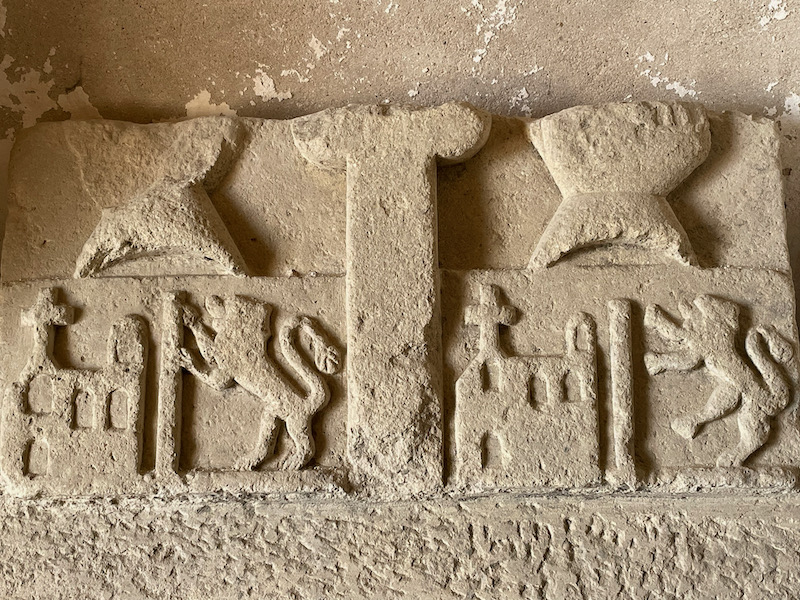
And then in part of that original square tower is a defensive staircase. You may ask why it is "defensive"? Well, it was built to make it easy for the residents of the castle to defend against intruders. First, the steps are very tall, 28 cm instead of a normal 18 cm. This made them more difficult for the intruders to climb with armor on. Second, it is very narrow, so a single person could hold off lots of intruders. Should the first intruder get injured or killed, he would fall on top of the ones below as it is only wide enough for 1.
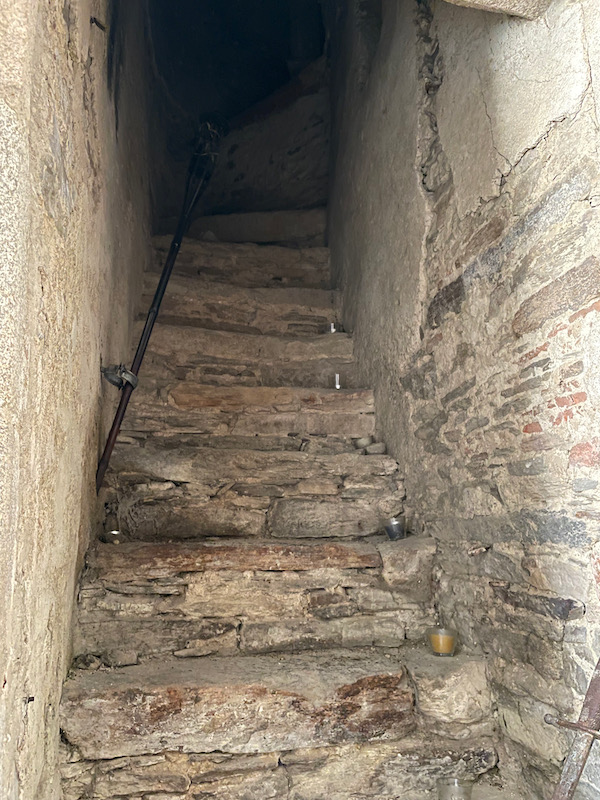
Up the stairs and out onto the balcony. Here you can see the courtyard looking towards the entrance gate. It used to be much taller, as it was originally a defensive wall. However, when the owner was given the title of Marquis, he shortened it to make it easier to see the palace from the town and easier for those in the palace to see the gardens outside of that gate. The defensive walkway between the two wings still exists and we walked over it near the end of the tour.
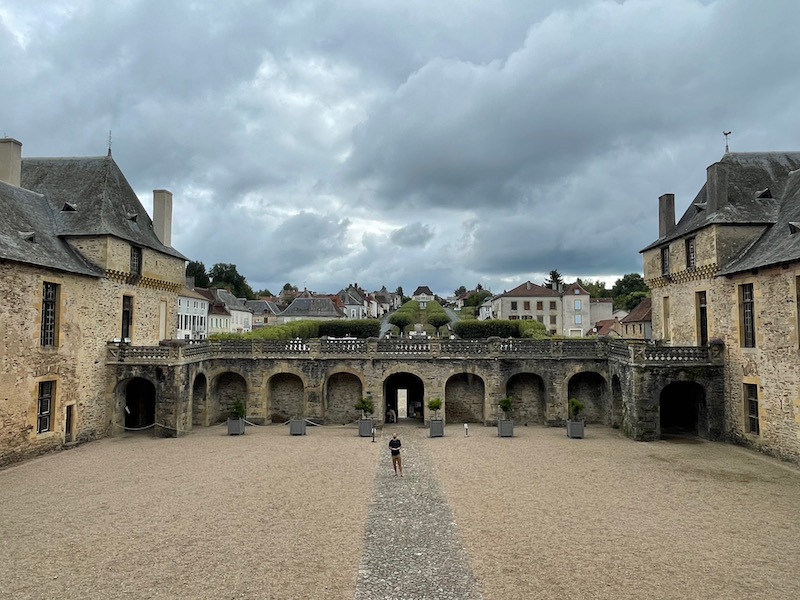
Then a couple of the rooms in the main part of the castle, which is the older part. You can see the very thick walls and the rounded roof ... this is called the Spinners bedroom but in the Middle Ages, was actually the chapel for the castle. Legend has it that this is where the son of the first Count of Jumilhac imprisoned his young wife while he was off fighting in the 30-years war.
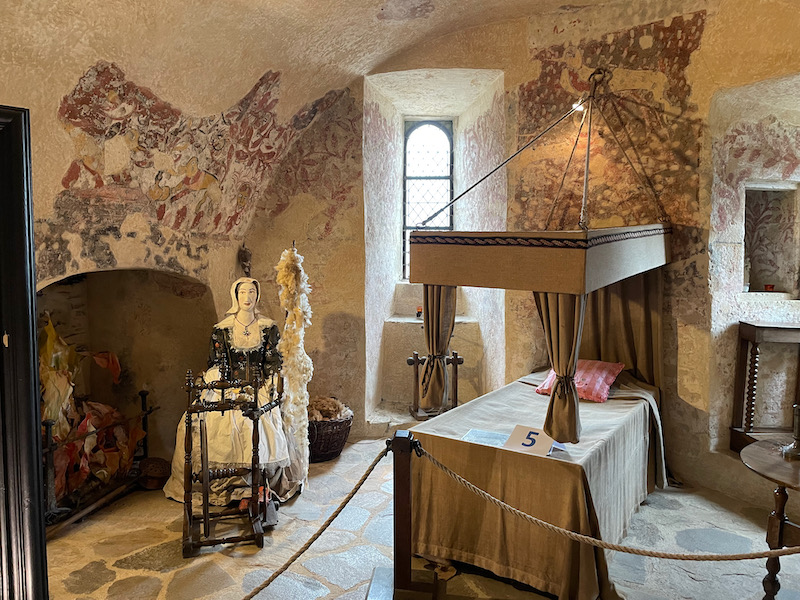
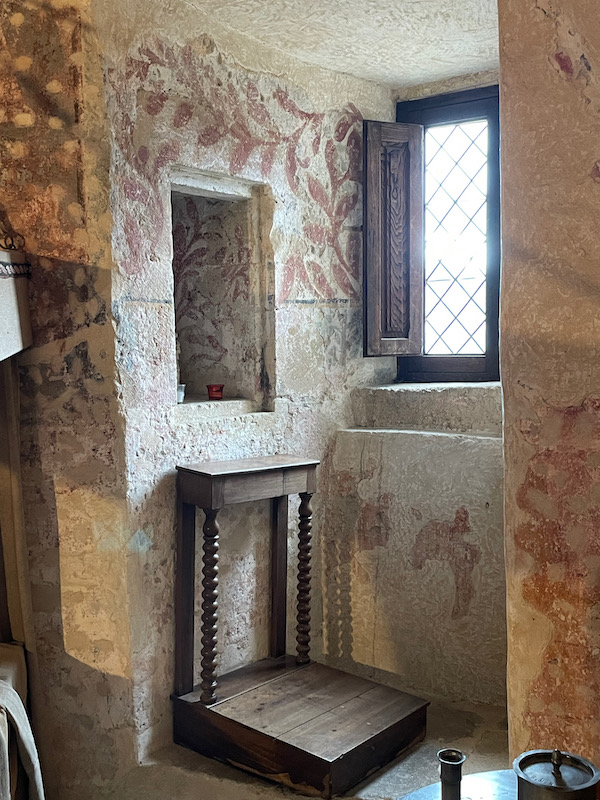
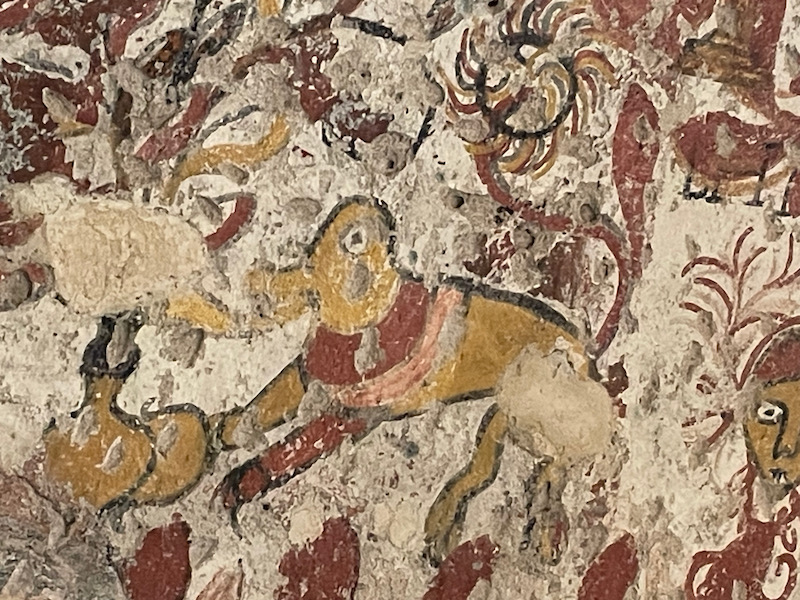
Now we head from the main castle into one of the wings ...and we see a totally different style. That is because we have moved from the 16th century part of the castle to the 17th century and the Palace of Versailles is what everyone wants to copy. So here we have a grand entrance hall with a magnificent staircase.
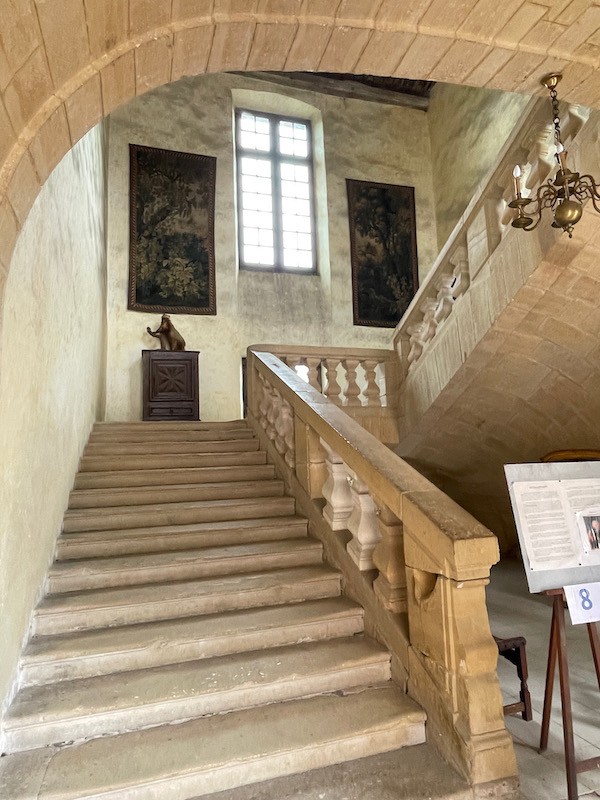
In the kitchen, they had a nice set of copper pans, I think there were 120 of them!
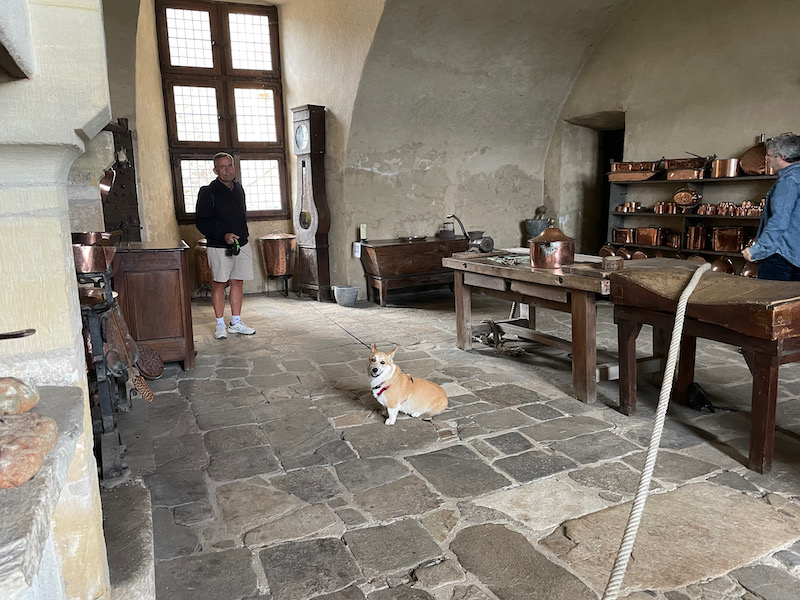
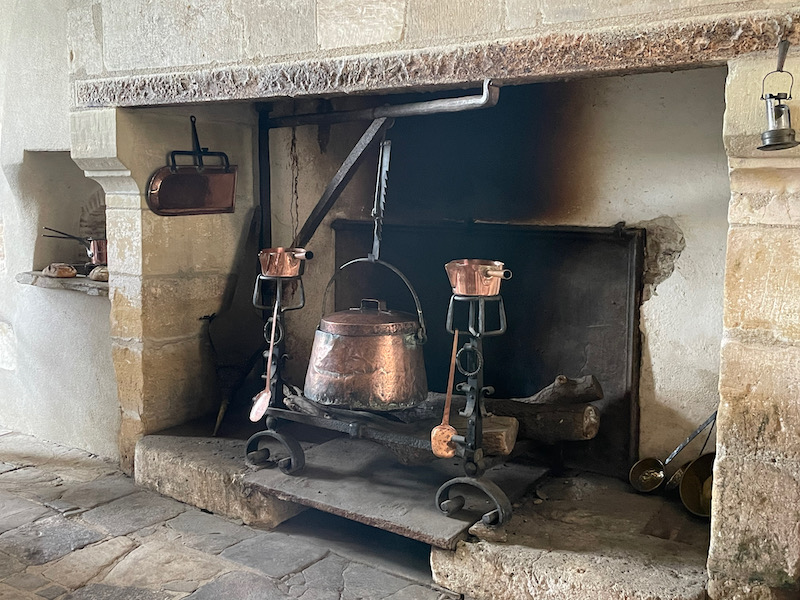
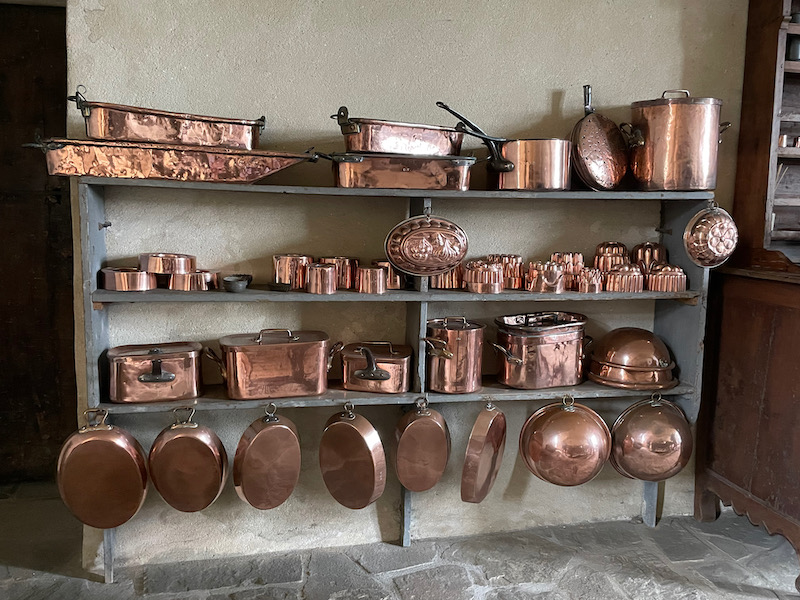
Then upstairs to the HUGE hall called the Four Seasons hall. The name comes from the carved wood fireplace with the 4 statues depicting the 4 seasons (the close-up is of Autumn with a fruit basket and grapes). You can also see the carved initials "A" and "M" which are formed so that they can be read from either direction.
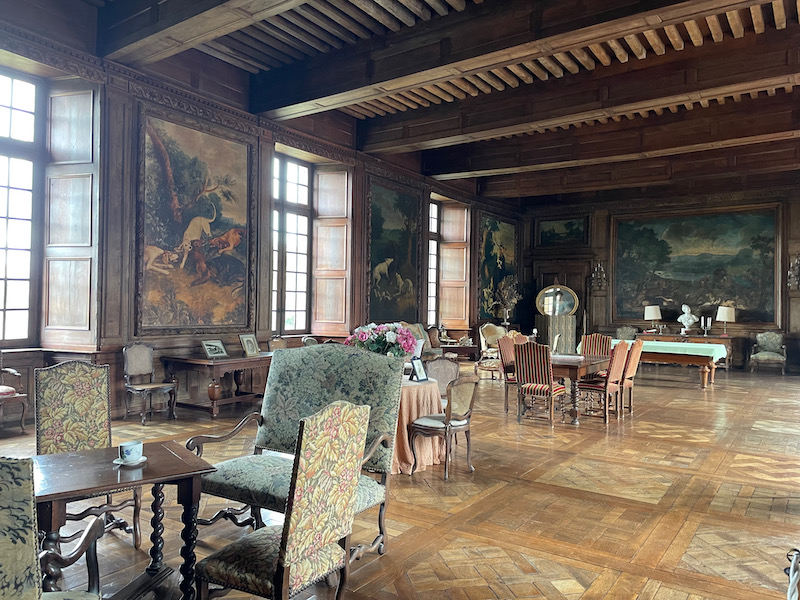
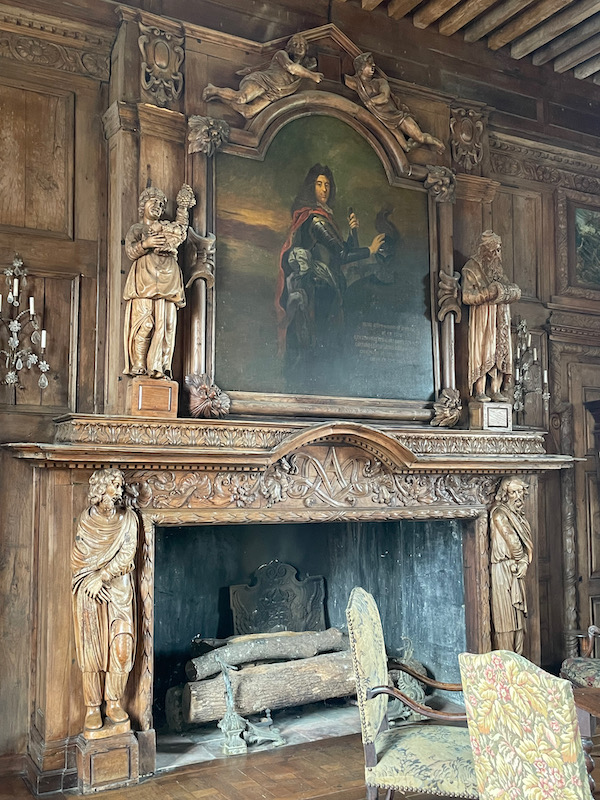
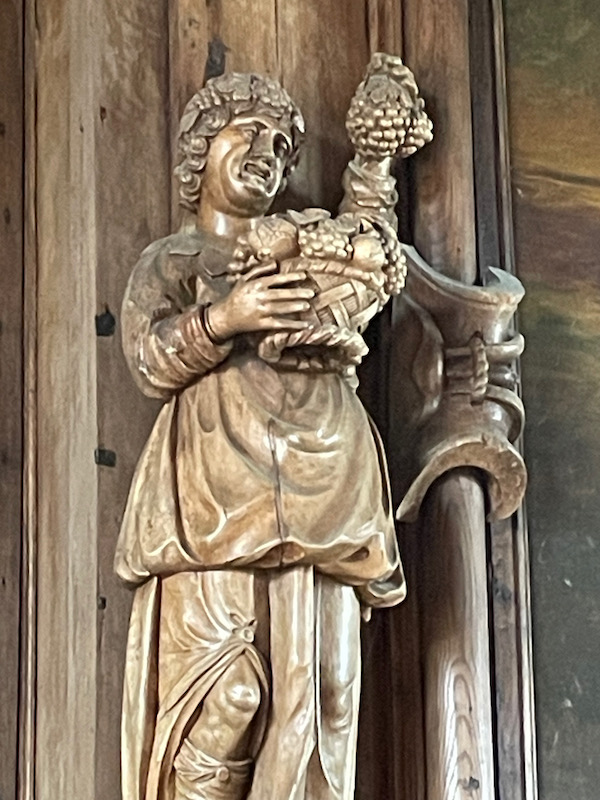
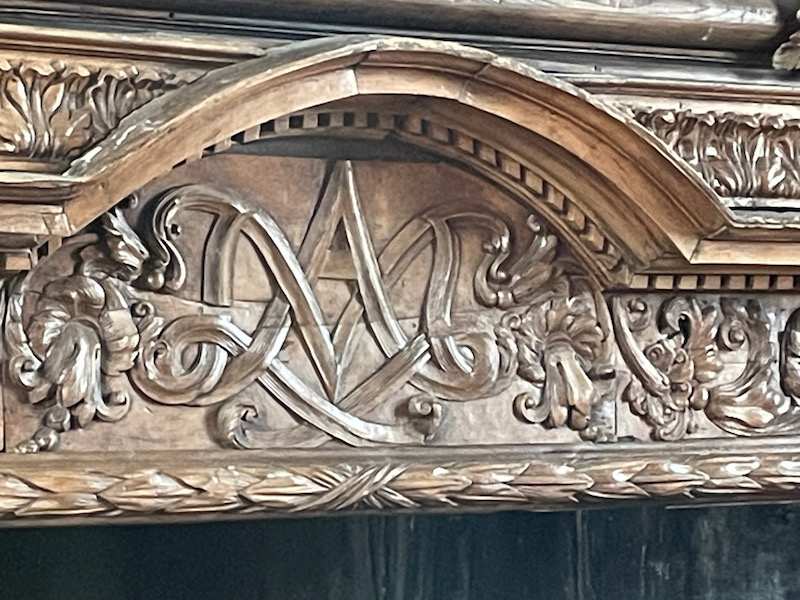
The Louis XV drawing room has a portrait of the king over the fireplace. The two most interesting pieces of furniture are the Oriental-style black screen in the corner decorated with mother-of-pearl and the small piano with the intricately carved/inlaid wood case.
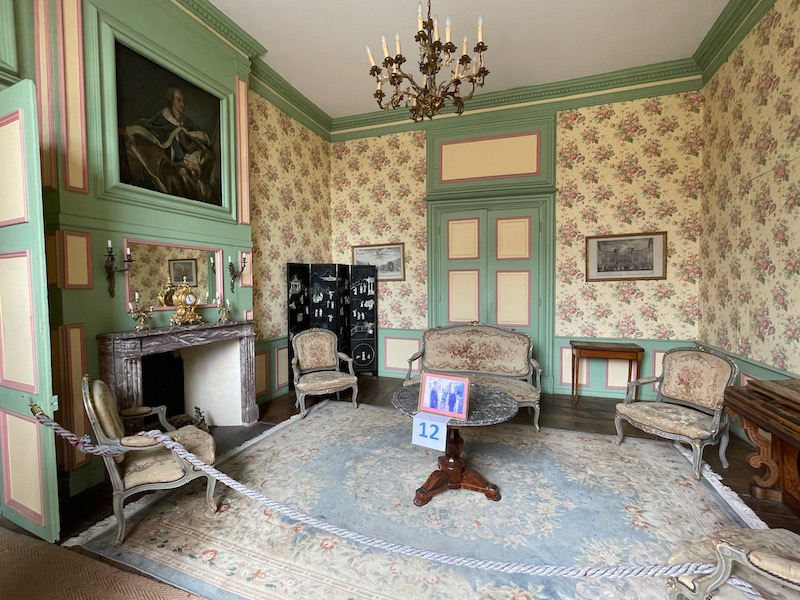
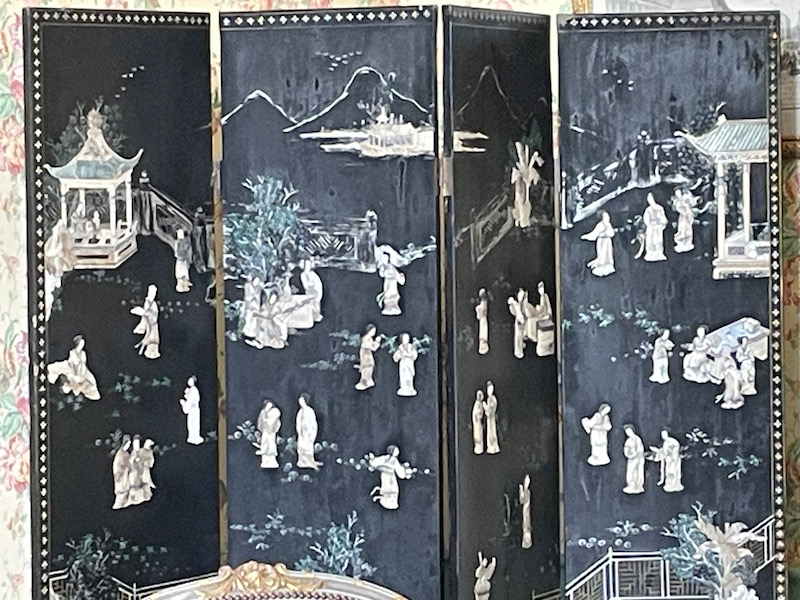
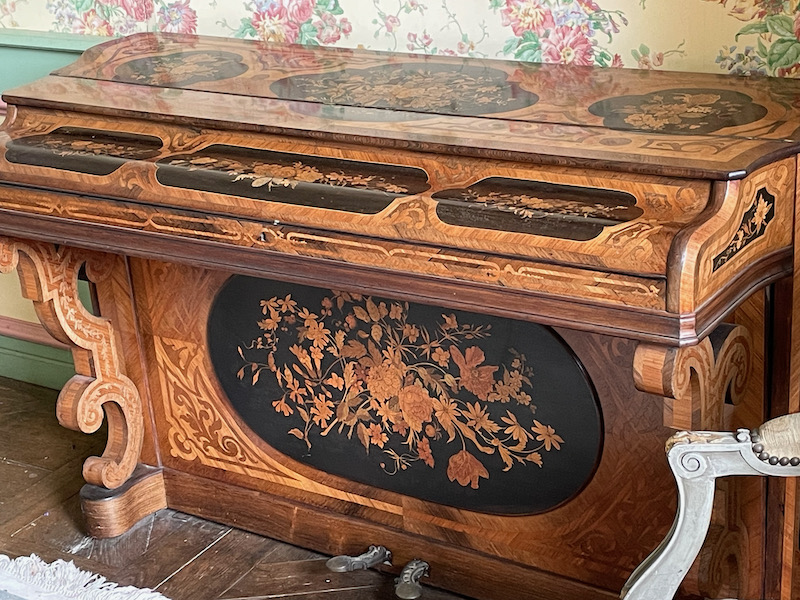
Now we head across the defensive walkway over the entrance gate, and tried to get a decent photo of Lucy with the castle in the background.
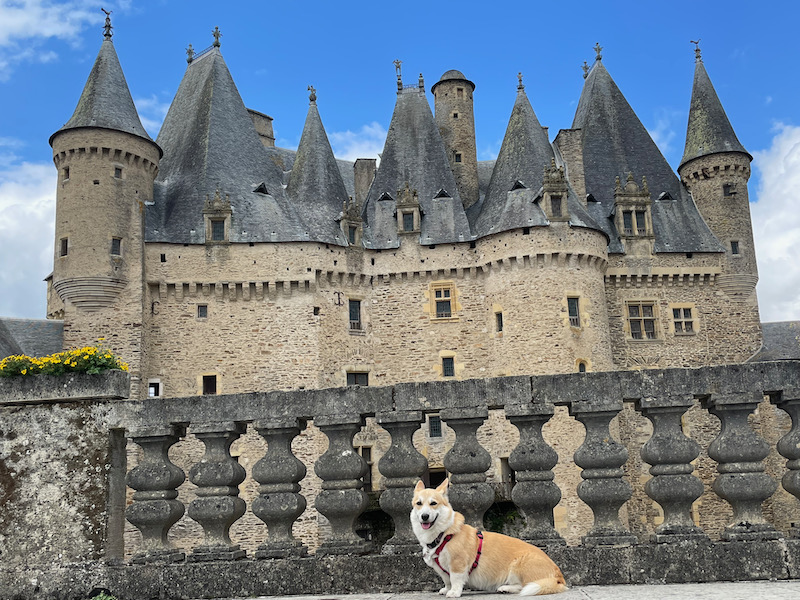
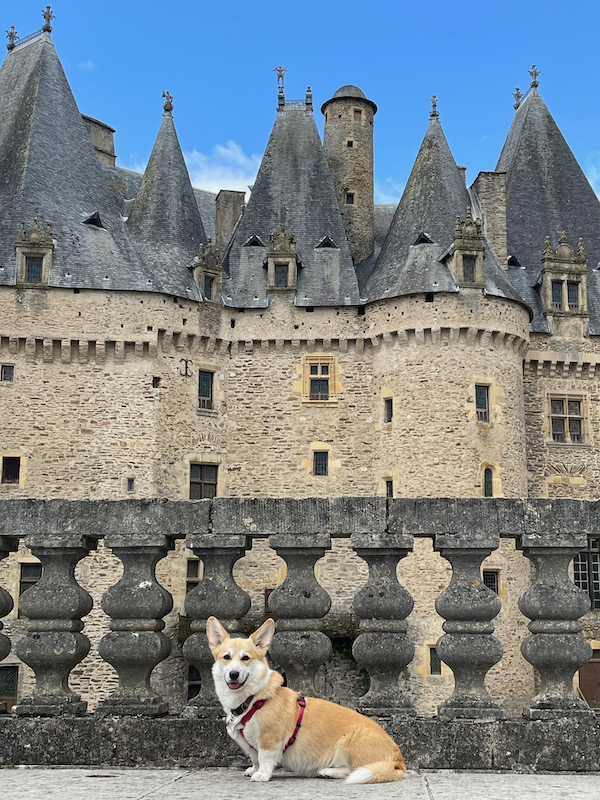
The other wing again has another style and was restored to be a concert or reception hall.
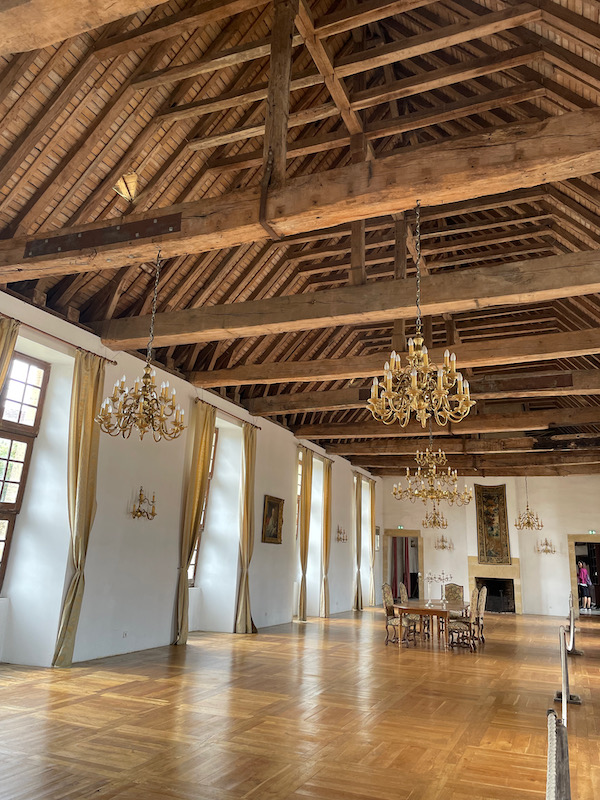
Outside pictures of the gardens and the chapel (which is not open to the public it would seem), along with some photos of the backside of the castle. The formal gardens that are here now were created in the 1990's based off of model of the castle gardens from 1777.
